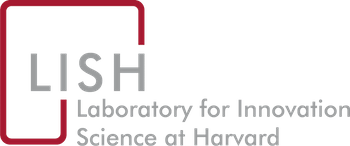The “self-organizing” of online crowds — or workers, more generally — into teams is a non-trivial problem of coordination and matching, in a context in which other parties are simultaneously competing for partners. Here, we experimentally investigate the capacity for workers in online crowds to self-organize into teams, within a scientific crowdsourcing contest. We compare matching outcomes and performance to those in a comparison group in which we eliminate the coordination and matching problem altogether (by directly assigning individuals to Pareto efficient teams). Online crowd members do remarkably well relative to the benchmark achieving 13% more functioning teams. Teams also tended to be more effective, by several measures. (We found no evidence these levels depending on the size of the self-organizing pool of workers.) Conditional on having formed, the self-organizing teams also benefit from several advantages in performance.
Incentives & Governance
. 2015. “Unpaid Crowd Complementors: The Platform Network Effect Mirage.” Strategic Management Journal, 36, 12, Pp. 1761-1777. Publisher's VersionAbstract
. 2011. TopCoder (B). Harvard Business School Case Supplement. Harvard Business School. Publisher's VersionAbstract
. 2009. “Platform Rules: Multi-sided Platforms as Regulators.” In Platforms, Markets, and Innovation, . Northampton, MA: Edward Elgar Publishing, Inc. Publisher's VersionAbstract
. 2017. “Firms, Crowds, and Innovation.” Strategic Organization, 15:2, Special Issue on Organizing Crowds and Innovation, Pp. 119-140. Publisher's VersionAbstract
. 2016. Revolutionizing Innovation: Users, Communities, and Open Innovation. Cambridge, MA: MIT Press. Publisher's VersionAbstract
. 2014. Prodigy Network: Democratizing Real Estate Design and Financing. Harvard Business School Case. Harvard Business School. Publisher's VersionAbstract
. 2011. “Incentives and Problem Uncertainty in Innovation Contests: An Empirical Analysis.” Management Science, 57, 5, Pp. 843-863. Publisher's VersionAbstract
. 2011. Innovation and the Challenge of Novelty: The Novelty-Confirmation-Transformation Cycle in Software and Science. Harvard Business School Publishing. Publisher's VersionAbstract
. 2016. Motivating Effort in Contributing to Public Goods Inside Organizations: Field Experimental Evidence. National Bureau of Economic Research. Publisher's VersionAbstract
. 2012. “Let a Thousand Flowers Bloom? An Early Look at Large Numbers of Software App Developers and Patterns of Innovation.” Organization Science, 23, 5, Pp. 1409-1427. Publisher's VersionAbstract
. 2015. Innovating with the Crowd. Harvard Business School Case. Harvard Business School. Publisher's VersionAbstract
. 2017. “Perceived Organizational Support For Learning and Contribution to Improvement by Frontline Staff.” Academy of Management Proceedings, 2017, 1. Publisher's VersionAbstract
. 2013. “Using Open Innovation to Identify the Best Ideas.” MIT Sloan Management Review 55 (1). Publisher's VersionAbstract
. 2011. InnoCentive.com (B). Harvard Business School Case Supplement. Harvard Business School. Publisher's VersionAbstract
